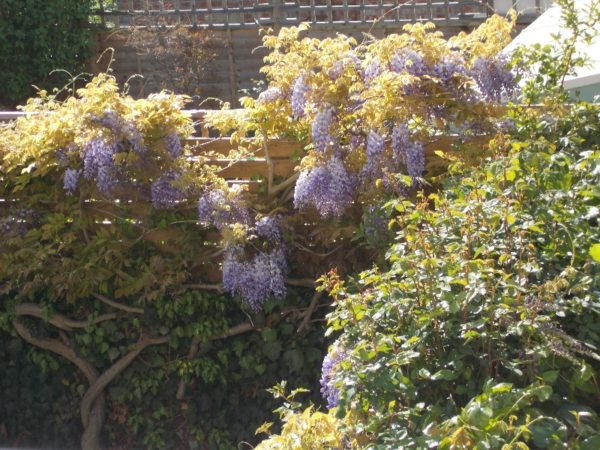
Cheltenham wisteria over the garden wall
In spite, or possibly even because of our harsh winter and late spring, scented flowers of shrubs and small trees have been glorious this year. The other day on our walk to the shops, my husband and I played ‘find the tree’ as we passed by one scented garden after another, and subtle differences in perfume declared the presence of lilac, wisteria and quick growing clematis montana in glorious and not always exclusive succession. We are lucky, our next door neighbours have nurtured a wonderful mauve, double helix twisted stemmed wisteria whose flourishing racemes of flowers generously hang over our side of the trellis as much as theirs. As the heat of the day dies down, the smell is beyond belief, as good as anything out of a stoppered bottle, and tinglingly life enhancing.
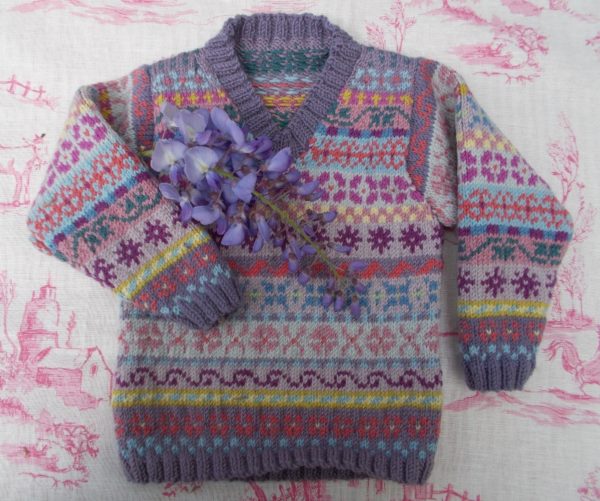
Fair isle jumper with wisteria flowers
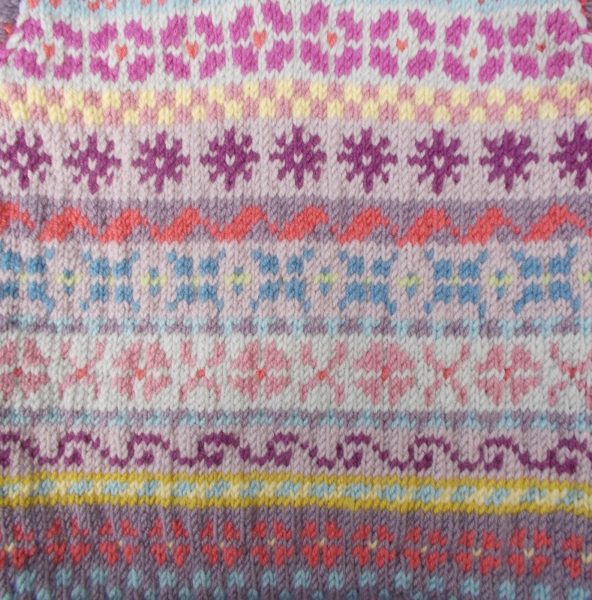
Detail of Fair Isle bands
As it happens – and I started this knitting weeks ago – my latest garment makes use of predominantly mauve wool, and includes colours in the range from mulberry and orchid to their palest relative. I looked through my books of Fair Isle and flicked through patterns from Pinterest until I had graph paper sketches of all sorts of motifs that looked like they’d be enjoyable to knit … and then I just set off with the needles and had fun. Surprisingly I undid very little, even after the early use of acid yellow which I only really came round to after I’d finished both back and font. With enough colours of yarn and repertoire of motifs, Fair Isle knitting is a heck of a lot more exciting than knitting inch upon inch of the same colour.
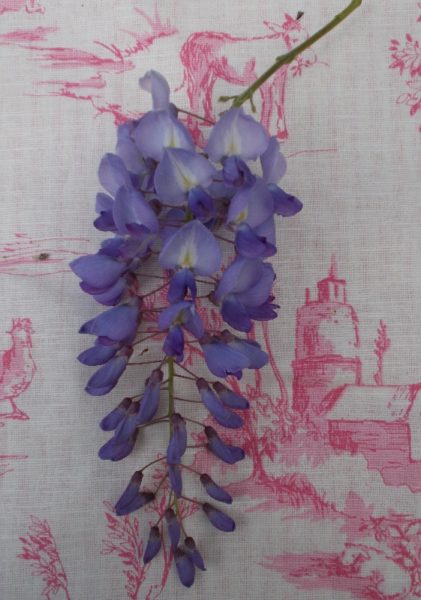
With mauve all around, I remembered that somewhere I had a copy of Simon Garfield’s book of the same name. The book came out on the coat tails of Dava Sobel’s ‘Longitude’ of 1995, a ground breaking book which made publishers realise that we rather enjoy the back stories behind such single issue subjects where serendipity, hard graft, vicious competition, a bit of blind fortune and a lot of musing over the human condition keep the reader a gripped as the best Ruth Rendell.
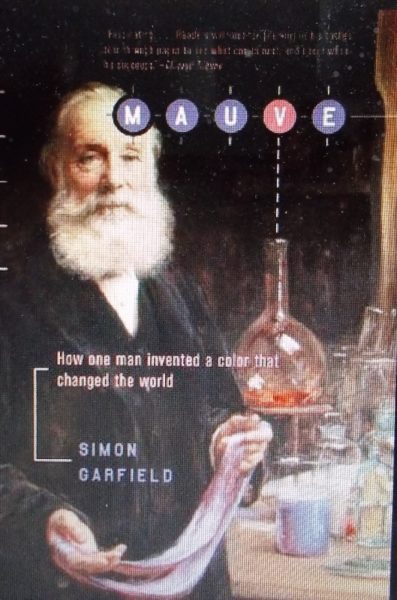
‘Mauve’ by Simon Garfield
Simon Garfield’s ‘Mauve’ tells the story of the accidental discovery of the first synthetic dye which could be mass produced in a factory. In C19th India, many British suffered with malaria. Quinine was the only treatment available and even that was often in short supply. The chemist William Perkin set out to synthesise artificial quinine from coal tar (aniline, a component of coal tar has a very similar chemical composition to quinine). Something went wrong in his experiment and the residue of muddy brown sludge which resulted turned out to produce a vibrant purple dye – a dye to match the illustrious Tyrian purple which for centuries had been produced from Mediterranean shell fish with much difficulty and at great expense. Garfield finds it ironic that the first successful artificial dye to be commercially manufactured and available to the masses should produce a colour so closely associated with imperial power and high birth.

8 Comments
Now _there’s_ a book I need to read!
Love your Fair Isle, by the way – a great success!
Some reviewers found the book a bit dry but I just love this genre of writing and when I’ve put books like this down I feel I have learned a lot or linked lots of bits of information floating around in the back of my head – worth getting old for!
Thanks for another interesting post, Mary. Who would have thought that coal tar would produce such a pretty colour! Love the beautiful Fair Isle pattern you’ve created; now I’m itching to knit some colour work too.
I know what you mean about itchy fingers – I’ve already cast on for the next jumper!
That jumper is beautiful, as is the wisteria.
A house opposite ours has wisteria growing up its front. It’s not ‘properly’ tended (all that twice yearly pruning etc) but this year it’s doing magnificently. Unfortunately it’s too far away to smell.
And as for that book . . . DH might find it interesting too!
I tried to grow a wisteria myself once but even after the 7 or so years of waiting I was told to expect, no flowers even appeared – so it’s even nicer that I can enjoy our neighbours’ plant – both sight and smell.
Who is DH?
I seem to recall that some Victorian diarist or letter writer commented that the streets of London had been invaded by a purple blight as ladies paraded in purple dresses, bonnets and shawls.
Love wisteria but have not been successful in getting one to bloom.
True, Anne – was it in this weekly journal edited by Dickens ? – see this Guardian review of ‘Mauve’ herehttps://www.theguardian.com/books/2000/sep/21/fiction.simongarfield.
I have had no success getting wisteria to flower either!